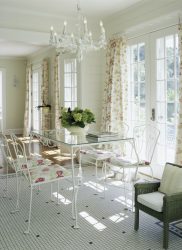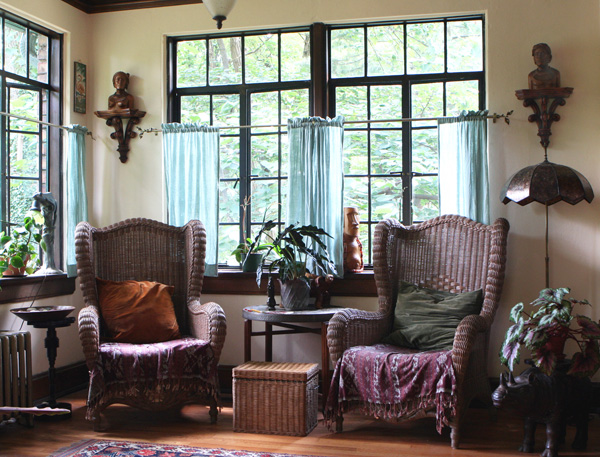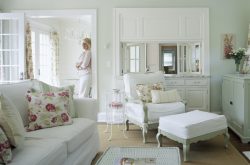
Are Today’s Homes Bright Enough?
According to new research, they’re not. Psychologist Kenneth Wright and a team of scientists from the University of Colorado, Boulder recently discovered today’s homes don’t include enough sunlight to kickstart the body’s clock. Combined with too much artificial light at night preventing sleep, these scientists argue designers simply don’t respect that humans are light-sensitive animals.

The Research
Wright asked volunteers to go camping, wearing special watches that record light levels. Campers also had their blood regularly tested to measure melatonin (sleep hormone) levels. After dark no artificial light was allowed. No mobile phones, televisions or ipads could be used, not even flashlights. However, campfires were acceptable because they only emit low levels of warm light. Wright found these campers were subjected to at least 13 times more sunlight during a winter’s day camping compared to the typical dimly lit home.
This research also discovered that the high contrast between natural daylight and evening darkness outside caused melatonin levels to rise 2.5 hours (winter) and 2 hours (summer) earlier than living at home. Campers quickly began sleeping and rising in tune with their body clocks. Which means they weren’t sleeping according to their body clocks at home. That’s right, their domestic environments disregard nature’s biological rhythms.
The Body Clock’s Importance for Health
Humans evolved to sleep at night and wake with the sunrise. This light-dark, daily (diurnal) pattern is deeply rooted in our biology. It guides our body’s clock, which stimulates melatonin and sleepiness when darkness comes. Unfortunately, disregarding natural sleep patterns not only increase stock prices for Starbucks, it also damages health. Being awake when your body clock says sleep dramatically increasing the chance of type 2 diabetes, obesity and mood disorders. According to the Centers for Disease Control and Prevention (CDC), a lack of sleep hygiene is quickly becoming a health crisis.
Sleep Hygiene and Healthy Design
Architects and designers are complicit in this health crisis. But they’re also part of the solution. By allowing scientific research to guide design, brighter healthier homes can easily be provided. Below are suggestions for including beneficial natural daylight while avoiding nasty artificial light:

Include More Openings
When designing new homes or remodeling old structures be militant about including more windows and exterior glass doors, especially on South facing walls. Although big glass openings are associated with harsh modern design, traditional styles employed many artful tricks for including light. To start, simply break up large runs of glass into multiple openings. Oversized ganged window units with grills (like the sunroom above) or rows of French doors tame openings while allowing lots of light. Tall, narrow windows are exciting and inviting, yet introduce light deeper into rooms than short and wide windows.
Transom windows can be placed above regular openings, washing the ceiling with light. Transoms became popular for hospitals and homes in the early 20th century as scientists first realized the importance of ventilation and light for health.

Add Sun-Rich Features
Beyond the typical window or door, other sun friendly features should accompany a home’s design. Perhaps the most common feature is the sunroom. From formal solariums to casual sun porches, glass walled rooms create great places to soak in sunlight, even in winter. Combined with interior windows and doors, sunrooms can light up the whole house.
Clerestories and dormers instead of skylights are other traditional tricks for adding light deep inside homes.
Encourage Outdoor Living
While architects and “interior” designers focus on the home itself, they can also promote outdoor living. Include plenty of connections to the outside, especially Southward in colder climates. But also Northward in warm, arid locations. What’s a connection without somewhere to go? Provide tempting outdoor living areas to draw people outside.

Filter the Sun As Needed
Remember, sometimes direct sunlight can be too much. The French doors in the image above have sun screens for filtering natural light, minimizing harsh bright spots inside. Also consider judiciously placed arbors, umbrellas and canopies.

Consider Interior Finishes
Once light reaches the inside, carefully consider how it reacts with interior surfaces. Paint walls with soft, light colors to increase a room’s ambient light. Trim is great for delineating openings, working best with visual contrast. Consider lighter or white trim for brighter opening. Don’t let ceilings or floors get too dark. Painted, upholstered furniture is often brighter than stained wood. Don’t forget to have fun. Celebrate color with bright splashes on pillows or other features. Capitalize on light and views from other rooms with interior windows, French doors and pass throughs.
Rethink Artificial Lighting
Natural light is great during the day, but too much light at night can wreak havoc on sleep patterns. Remember, the high contrast between bright day and dark evening is what kickstarts the body’s clock. Consider both the intensity and color of light available after dark. Minimize windows in sleeping areas. Provide black out shades. Reduce artificial light intensity and minimize blue light which keeps the pineal gland from releasing melatonin.
With modern technology healthy artificial light is easily attainable. Install electronically dimmable light bulbs to reduce intensity at night. Use color corrected bulbs without blue light and this light from electronic devices. Read by the fire or install strategic warm color bulbs.
On grey winter days consider the opposite. High intensity white or color balanced light bulbs are often used to treat seasonal affective disorder (SAD). Why not cheer up your home using the same therapy by installing these bulbs in main living areas?
Research Credit:
The Journal Current Biology
Entrainment of the Human Circadian Clock to the Natural Light-Dark Cycle. Kenneth P. Wright, et al. Published online: August 01, 2013.
Image Credits:
Sunroom from Todd Remington Project.
Photographed by John Reed Forsman.
Used with permission from Better Homes & Gardens magazine.
© 2005 Meridith Corporation. All rights reserved.
Sunny Eating Area from Todd Remington Project.
Photographed by John Reed Forsman.
Used with permission from Better Homes & Gardens magazine.
© 2005 Meridith Corporation. All rights reserved.
Transom Windows by Anoldent (Flickr)
Outdoor Living Room from Todd Remington Project.
Photographed by John Reed Forsman.
Used with permission from Better Homes & Gardens magazine.
© 2005 Meridith Corporation. All rights reserved.
Light, Bright Surfaces from Todd Remington Project.
Photographed by John Reed Forsman.
Used with permission from Better Homes & Gardens magazine.
© 2005 Meridith Corporation. All rights reserved.